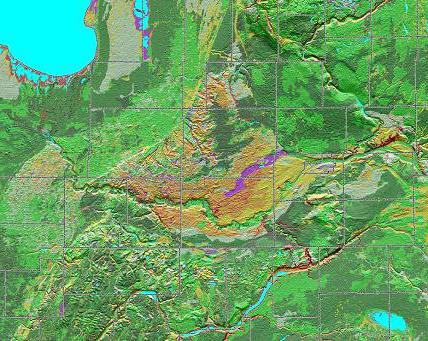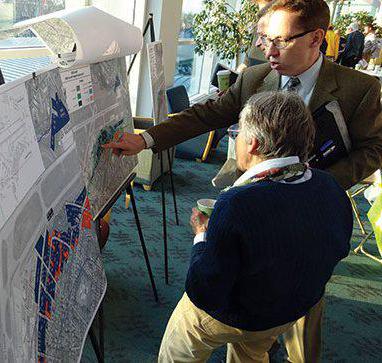An inventory of the lands of settlements is carried out within the administrative-territorial unit, in its built-up part or in other borders, agreed with the authorized bodies. Work performers are enterprises, organizations, citizens who have received a license in the manner prescribed by law. Let us consider in more detail how an inventory of the city’s land is carried out. 
Targets and goals
The purpose of the land inventory is:
- Creating a base for maintaining the state cadastre.
- Ensuring the registration of tenure, ownership, lease and use.
- Organization of continuous monitoring of the use of the territory.
- The formation of the database.
The main tasks of the procedure are:
- Identification of all owners, users, owners and tenants of sites.
- Establishment of the boundaries of the territory, removal and fixing of features on the ground.
- Identification of unexploited and used irrationally allotments.
Land inventory
It is carried out in three stages. At the first, preparatory, land inventory materials are collected and analyzed. At the same stage, the question of the border of the territory is solved, a study of the geodetic network of the area is carried out. As part of the preparatory phase, the collection and study of materials related to the restoration / establishment of the administrative unit features is carried out, and the terms of reference are drawn up. 
Required Information
The following data are subject to collection, research and analysis:
- Obtained from the results of topographic surveys and geodetic works performed on the ground. They can be obtained in the territorial divisions of the State Surveillance, departments of architecture and urban planning, as well as in organizations that have their own funds.
- General plan and other documentation.
- Previous inventory.
- Allot allotments.
- To carry out in kind, restoration / establishment of borders of sites and settlement.
- Inspection of individual built-up areas.
- Executive surveys containing information on the ownership, use, ownership, lease of plots.
Technical task
It is formed in accordance with the collected and analyzed information. AT terms of reference should be indicated:
- Grounds for the land inventory.
- Name of customer and person performing work.
- Objectives of the procedure.
- A list of methodological and regulatory documentation in accordance with which an inventory of land is carried out.
- Name of the person coordinating and supervising the work.
- Data on the availability of data from previous surveys.
- The need to restore / establish the features of the village.
- Scope and types of work.
- Coordinate system.
- Special and additional requirements for the performance of work.
- The term and procedure for the provision of inventory materials.

Production stage
During it are carried out:
- All types of surveying. They are necessary for obtaining cadastral data on the location of plots.
- Survey of boundaries of use on the ground.
- Coordination of site limits with related owners.
- Detection of the facts of irrational use, unauthorized occupation, as well as the identification of disputed boundaries, burdens.
- Collection of semantic cadastral information.
Geodetic works
They include:
- Building a core network.
- Drawing up a shooting rationale.
- Topographic survey.
- Coordination of land surveying signs relative to points of the base geodetic network.This is necessary to determine the area of use in an analytical way.

Cameral stage
Land inventory ends with the processing of the collected data and their registration. Summarized are measurements taken to determine the semantic and geometric cadastral information that was obtained at the production stage. During the cameral stage:
- Checking field logs.
- Formation of a cadastral plan. It is compiled on a scale at which the required accuracy and completeness of the data display will be provided.
- Equalization of networks of survey planning justification and basic geodetic networks.
- Calculation of the coordinates of the turning sections of the borders of the territories
- Determination of areas by analytical method.
- Formation of coordinate catalogs with turning points of the boundaries of the plots, as well as an inventory line of the object.
- Drawing up plans for the limits of the territory, quarters.
- Formation of an inventory drawing.
- Registration of cadastral information.
- Formation of a technical report.
- Database creation.

Cadastral plan
This document contains elements of the territory, structures and buildings located on it, including engineering (ground and underground) networks. All these data are used to determine the boundaries of the areas of encumbrance. In accordance with the cadastral plan, a drawing is made. It displays:
- The line of the administrative-territorial unit or the border within which the land inventory is carried out.
- Lines of zones, quarters, arrays, sections and their numbers.
- Borders of territories with a special regime of land use.
Features of scale
With an area of cadastral plan less than 20 km2 square marking is used. It includes frames 40x40 cm for pages on a scale of 1: 5000. They are taken as a basis, and their nomenclature is indicated in Arabic numerals. Each of them corresponds to 4 pages with a scale of 1: 2000. Their nomenclature is compiled by attaching one of the first capital letters of the Russian alphabet to the cadastral plan sheet number at a scale of 1: 5000. Frames of 50x50 cm are used for sheets 1: 500, 1: 2000, 1: 1000. A page on a scale of 1: 2000 corresponds to 4 sheets in a scale of 1: 1000. They are indicated by Roman numerals. The layout of plans at the scales of 1: 5000 and 1: 2000 is based on plots with an area of more than 20 km2, uses a single scheme, in which the main is a sheet in a scale of 1: 100000. Drawings are made up on special paper glued to hard material.
Final stage
At the end of the work, inventory materials are compiled. They must include:
- Explanatory note.
- Directory of coordinates of all the turning points of the territory in a conditional or local system.
- Explication of land composition by massifs, zones, object or by settlement as a whole.

Errors and Errors
The contours and the situation to be displayed on the plan are reflected by conventional signs in accordance with the rules of normative technical documentation. The average errors in the arrangement of lines with a clear outline in relation to the nearest sections of the shooting justification on the undeveloped part cannot exceed 0.5 mm. In the territory occupied by structures and other objects, the marginal errors of the mutual arrangement of the contour points (turning points of use boundaries, communication exit centers, corners of capital structures, power transmission towers, water taps) should not exceed 0.4 mm. The accuracy of the plan is estimated by the average discrepancy in the position of the contours and objects with data from field measurements. The marginal differences should not be more than twice the values of the average errors. Their number cannot exceed 10% of the total number of measurements.



